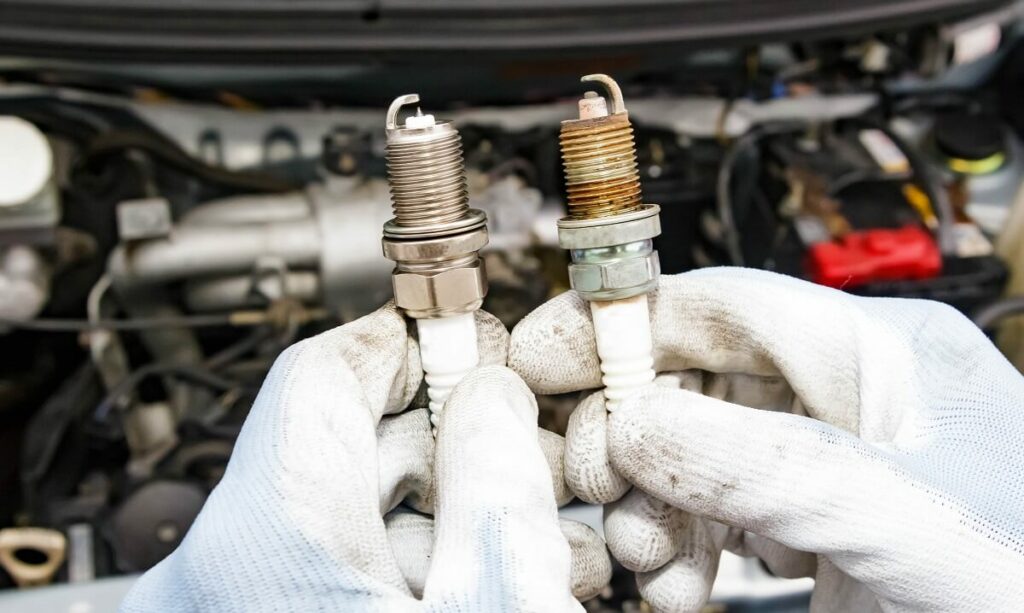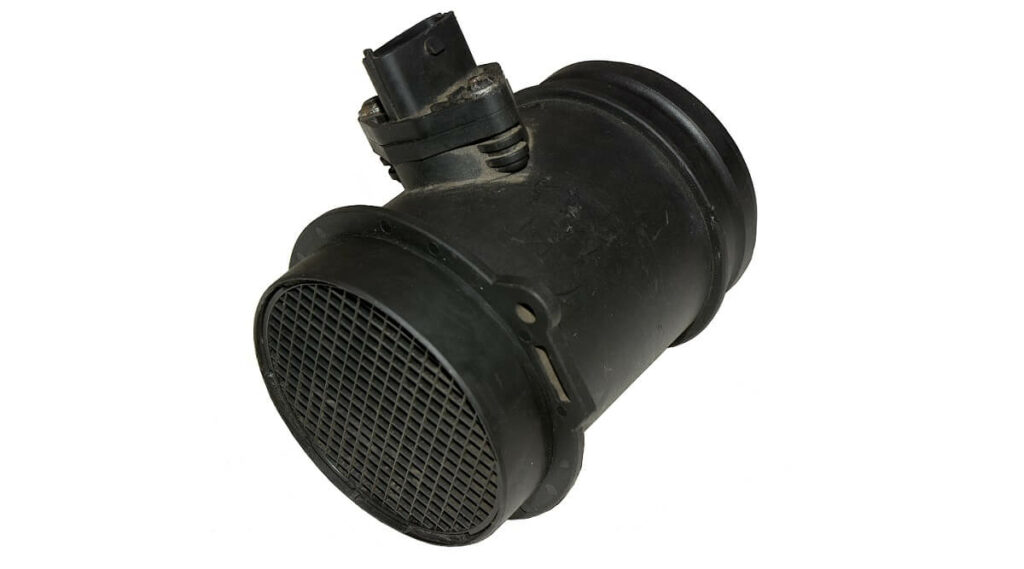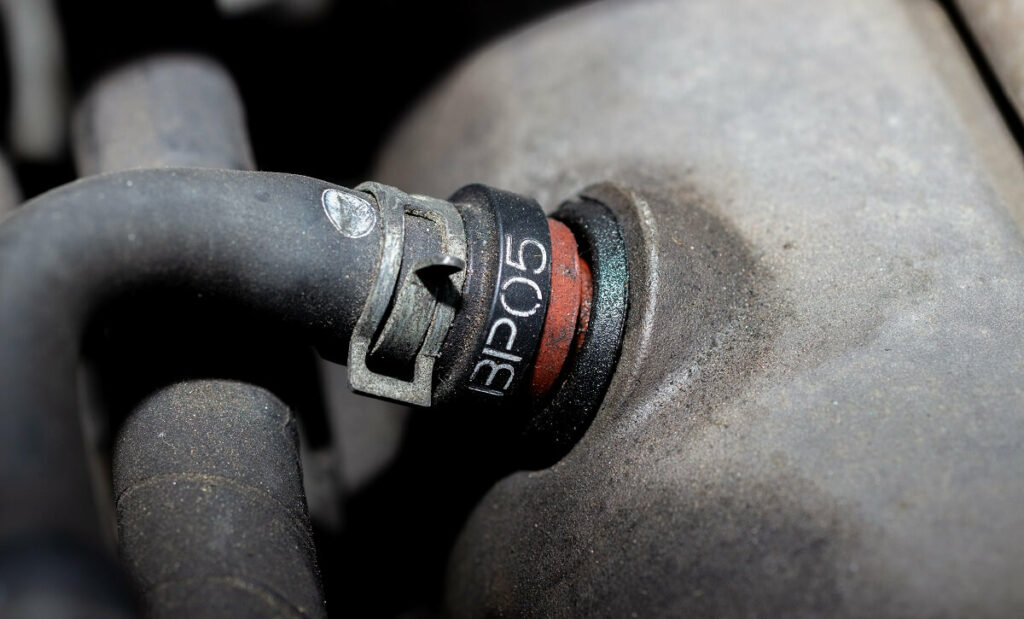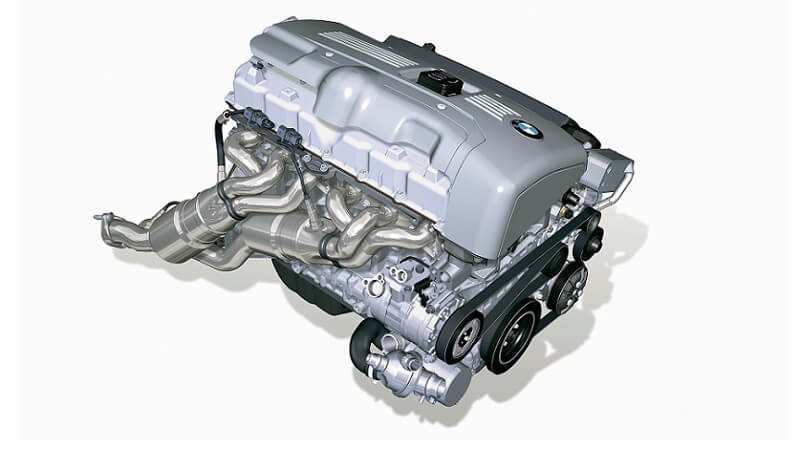As your car ages, it’s bound to develop a few issues here or there. Even the most reliable pieces of modern-day engineering are predisposed to the inevitability of mechanical failure. One of the more common problems you’ll probably encounter is a rough idle. You may even experience a rough idle on newer cars, but it’s more likely on vehicles with a lot of mileage.
Unfortunately, a rough idle can be caused by several factors — it’s simply a symptom of an underlying issue with the engine or one of its related components. In this guide, we’ll look at some of the most common causes of a rough idle and what you can do to fix it.

What is Idling?
When the engine is running while the vehicle is not in motion, it’s called idling. Effectively, it’s what your engine is doing when you start your car or come to a halt and take your foot off the gas.
When the engine is idling, it’s uncoupled from the drivetrain, and there is no input from the driver. The idle speed is the rotational speed of the motor, or rpm, at idle. In most modern-day cars, this ranges between 600 rpm and 1,000 rpm. This number can be as high as 5,000 rpm on high-performance race cars.
At idle, the engine is only generating enough power to run the essentials, like the water pump and alternator, and can also withstand the load of the air conditioning.
The idle should be smooth and consistent on a properly functioning, problem-free engine. If it’s unsteady and causes vibrations or sudden jumps and drops in rpm, it’s considered a rough idle.
What Causes a Rough Idle at Low RPM?
An engine needs a specific air and fuel mixture ratio to work smoothly. If this ratio is incorrect, it will result in improper combustion, translating to a rough idle. Thus, the main factors behind the issue are almost always related to the air or fuel supply and the ignition process.
Clogged Air Filter
The air filter is a simple yet necessary step in the flow of air from the surroundings to the engine. It prevents any dust, sand, or debris from reaching the combustion chambers. However, as the air filter continuously blocks these contaminants, it can get saturated and lose its effectiveness.
One of the symptoms of a clogged air filter is a rough idle, as the quality or quantity of air reaching the engine drops to a level that is no longer adequate.
A dirty air filter can cause other problems as well. For instance, dirt and dust that passes through the air filter can settle on the spark plugs, which is a whole different ball game.

How to Fix the Issue
If you notice a rough idle or a change in the sound of your exhaust note, you should first check the air filter. Checking the air filter is one of the more basic aspects of car maintenance and will only take a couple of minutes.
Check the car’s user manual for the location of the filter if you don’t already know where it is, and visually inspect if it looks clogged and dirty. In most modern vehicles, the best way to deal with a dirty filter is to replace it. These are generally affordable, and there is an abundance of good options on the market. We suggest sticking to quality brands such as MANN-Filter or similar, as these manufacturers have a proven track record of delivering good results with their products.
If you run a K&N type filter, you’ll need to clean it. Filters like these require regular maintenance. Consult your filter’s user manual for more information.
Fuel Pump, Fuel Filter and Injector Problems

Two of the core components in the fuel system are the fuel pump and the fuel injectors. A fuel pump pressurizes fuel stored in the car’s fuel tank and sends it via fuel lines to the fuel injectors. These injectors then atomize the pressured fuel and spray it directly into the combustion chamber, where it is ignited.
A fuel pump needs to supply the injectors with fuel at a specific pressure. Similarly, the injectors have to spray the fuel into the cylinder at a particular angle and time to properly combine with the air drawn in from the air filter. If there is an issue with either of these parts, it can result in imperfect combustion and a rough idle.
Poor quality fuel can result in sediment buildup on the fuel pump screen and carbon build-up around fuel injector nozzles. This can significantly affect their regular performance and sometimes even clog the injectors. Apart from a rough idle, fuel pump or injector-related symptoms also include sudden drops in power and efficiency.
How to Fix the Issue
The simplest way to check if your fuel pump is working is to listen to it. When the ignition is turned on, the ECU immediately sends a signal to the fuel pump for it to send gasoline to the engine. This action is characterized by a steady humming noise that typically lasts a couple of seconds.
To check if your pump is working, put your ear next to the fuel cap and have someone turn the ignition on. If you don’t hear the sounds, or if it comes intermittently, there’s something wrong with the pump.
That being said, a dead pump will cause far more issues than just rough idle. A fuel pump that isn’t delivering enough fuel to the engine could cause a rough idle. The only way to check fuel pump pressure is to disconnect the fuel line somewhere before the engine and crank the motor to see if there’s a tangible lack of fuel reaching the engine. A fuel pressure gauge will give you more precise measurement.
Another thing worth looking into is your fuel filter. Just like air filters, fuel filters can become clogged as well. A clogged fuel filter will prevent the necessary flow of fuel through the system, thus negatively affecting the pressure in your fuel line.
Checking the fuel injectors is a slightly more complicated process, and you’ll get the most accurate results if you have a technician do it with the right tools. However, you can also do a preliminary check with a screwdriver.
Place the metal tip of the screwdriver against the fuel injector when the car is running and put your ear against the screwdriver’s grip. If you hear a continuous ticking sound, the injector is working as it should be; if it’s quiet and there is no rhythmic tick, the injector needs to be cleaned or replaced.
Idle Air Control Valve Issues
Most bimmers are fitted with some sort of Idle Air Control Valve. This is a device that ensures that the engine is receiving enough air to sustain a flat idle when the throttle body is in its closed position. Due to a number of reasons, IAC valves tend to clog up with soot. A clogged IAC valve, or one that is otherwise malfunctioning can lead to a number of issues, including a rough idle.
How to Fix the Issue?
The best way to troubleshoot and fix a failing IAC valve is to remove it, clean it, and properly inspect it. In most cases a thorough cleaning will solve all of your issues. However, sometimes you might need to replace the entire unit. In that case, we strongly suggest getting an OEM part such as Bosch 0280140545 or similar, that will put an end to your rough idle issues.
Faulty Spark Plugs
One of the more common culprits behind a rough idle is a worn spark plug. As part of the ignition system, the spark plugs create an electric spark that ignites the air-fuel mixture in the combustion chamber, creating the explosion that produces power. Understandably, they’re an indispensable part of a gasoline engine, and if they’re faulty, they can cause several symptoms, including a rough idle.
Many factors can cause a spark plug to fail, from incorrect heat ranges to chemical contamination and gapping. If the plugs are not working as they should, the mixture in the cylinders can be properly combusted. This uneven burning of fuel causes a rough idle and will sometimes stall your engine as well.

How to Fix the Issue
The only real way to know what’s going on with your spark plugs is to remove them and inspect each one for damage. There are several clues that could indicate that something is out of spec. For one, look at the condition of the spark plug.
Is it covered in oil? Is there soot on it? If there’s oil on the plug, it could easily prevent it from delivering a good enough spark in that cylinder. The presence of oil will also tell you that you have a more serious problem that needs addressing.
A spark plug that’s covered in soot indicates that your engine is running rich. Similarly, a completely white spark plug indicates that your engine is running lean. Both of these can be the cause of your rough idle.
Lastly, check the gap. Every car manufacturer including BMW uses specific spark plug gap specs for their engines. Find what the gap spec is for your bimmer and check the plugs.
The absolute best way to deal with worn spark plugs is to replace them. We suggest getting a set of new spark plugs made by some of the renowned manufacturers such as NGK or Bosch depending on what your engine likes.
Vacuum Leak Issue
A vacuum leak implies that a certain amount of extra air has entered the system undetected by the engine control module. In a properly functioning engine, all of the air that makes its way to the cylinders is routed via the throttle body. A mass flow sensor (MAF) found on the intake measures how much air passes through and relays this info to the ECU, which then injects the right amount of fuel into the combustion chamber.
In the presence of a vacuum leak, some air makes its way to the intake manifold without passing through the throttle body. This can result in a lean mixture that causes a rough idle. In more severe cases, a lean mixture can also lead to engine detonations or engine knock
How to Fix the Issue
The excess air can enter the engine via worn-out gaskets or other parts of the intake system, like tubes or welded joints that have cracked or have holes. Since several components are a part of the vacuum system, pinpointing the leak can be pretty tricky.
The car’s service manual should have a vacuum system diagram. Checking each of the components and tubes within this system and ensuring that everything is in order will help you figure out if or where there is a leak.
We suggest that you start chasing leaks right after the MAF sensor on the intake booth as that particular piece of tubing is prone to cracking due to the constant hot/cold cycles of the engine. Alternatively, you can also run a vacuum test that will help diagnose the leak.
Defective Mass Air Flow Sensor
A mass airflow sensor determines the rate of airflow entering an engine. It sends this data to the ECU, delivering an appropriate amount of fuel to the engine. The MAF sensor is placed between the engine’s intake manifold and the air filter. It is a vital piece in the smooth running of the engine as it is indirectly responsible for achieving the correct air-fuel mixture in the combustion chamber.
If the sensor fails, it can signal the ECU to send too little fuel or too much fuel. If it’s the latter, the engine will be forced to burn a lean mixture, resulting in a rough idle and a loss of power.

How to Fix the Issue
Sometimes, the MAF sensor fails due to dirt and dust that settles around it. If this is the case, cleaning the sensor could help resolve most of your troubles (we have a detailed guide mentioning how you can go about doing this).
However, cleaning the MAF sensor will likely only delay its failure, and if you can afford it, we recommend replacing the unit altogether.
Oxygen Sensor Failure
The oxygen sensor is a small yet significantly important piece of equipment in the modern-day automobile. It measures the amount of oxygen in the exhaust gasses from the engine and sends this data to the ECU. The ECU then adjusts the air-to-fuel ratio to reduce how much unburnt oxygen passes off in the exhaust gasses.
When an O2 sensor fails, it can result in a rough idle and a drop in fuel efficiency. It can also result in the production of more carbon, which will lead to further problems.
How to Fix the Issue
Since the oxygen sensor is constantly exposed to exhaust gasses, it can get contaminated. Plugging in an OBD-II diagnostic tool and checking for O2 sensor-related trouble codes is the best way of figuring out if they’re the reason behind a rough idle. They’re a slightly more complicated fix than the spark plugs mentioned above, so if you don’t know your way around a car, you should have the sensor replaced by a professional.
Low Compression
One of the more serious reasons behind a rough idle is low compression. Most modern-day engines, like the ones on our Bimmers, go through four strokes — intake, compression, combustion, and exhaust — each of equal importance.
Once air and fuel are drawn into the cylinders, the piston moves along the cylinder, compressing the mixture and building pressure; this high-pressure mixture is then more quickly and efficiently ignited by the spark plug. Low compression in an engine is when the pistons fail to build enough pressure within the cylinder, resulting in inefficient combustion.
Low compression in your car’s engine is most noticeable at idle. Other symptoms include misfiring and knocking, and in more severe cases, can prevent the engine from starting.
Typically, low compression in the engine is caused by the mechanical failure of one of its components. This includes worn-out head gaskets, piston rings, or intake and exhaust valves.
How to Fix the Issue
Unfortunately, since low compression directly involves parts of the engine, the only way to rectify it is to tear down the engine and check for what needs to be replaced. Breaking the engine down and putting it back together is a tedious and expensive process, so we strongly urge that you rule out all the other possible reasons before doing so.
On the plus side, most modern-day engines are put together pretty well, so something like a head gasket issue is rather unlikely unless your car overheated. With regular maintenance, you should be able to avoid the issue entirely.
Failed or Failing PCV Valve

The positive crankcase ventilation valve (PCV valve) is integral to the exhaust system. The one-way valve attached to the crankcase ensures that the exhaust gasses from the engine don’t mix with the engine oil. If this happens, it can result in the formation of sludge that will deteriorate the engine components. A faulty PCV valve can also result in a pressure build-up in the crankcase, blowing gaskets and seals.
The PCV valve also has a breather tube that allows clean air to enter the crankcase to maintain steady circulation. If the valve is stuck in the “open” position, it can allow too much air to enter the intake manifold, resulting in a lean air-fuel ratio and a rough idle.
How to Fix the Issue
The only way to rectify problems caused by a malfunctioning PCV valve is to replace it.
Is It Safe to Drive with a Rough Idle?
A rough idle is simply a symptom of a more severe underlying issue. Typically, something that causes a rough idle will also bring up other problems that may have severe consequences on the engine. While it’s safe to drive with a rough idle, you run the risk of making the issue worse and contributing to a more extensive repair list.
If your car has a rough idle, you should get it diagnosed and repaired as soon as possible.
Use Quality Parts In Your Bimmer
Preventative maintenance is the absolute best way to keep any rough idle issues in the realm of highly improbable. However, it’s not just how often you maintain your car that matters, but also what parts you’re using during the process.
Here at Bimmers.com, we offer a wide range of genuine BMW, OEM, and quality aftermarket parts for your car. Simply head over to our store section, select your bimmer using our vehicle selection tool, and you’ll be able to find parts that are a guaranteed fit for your car.





